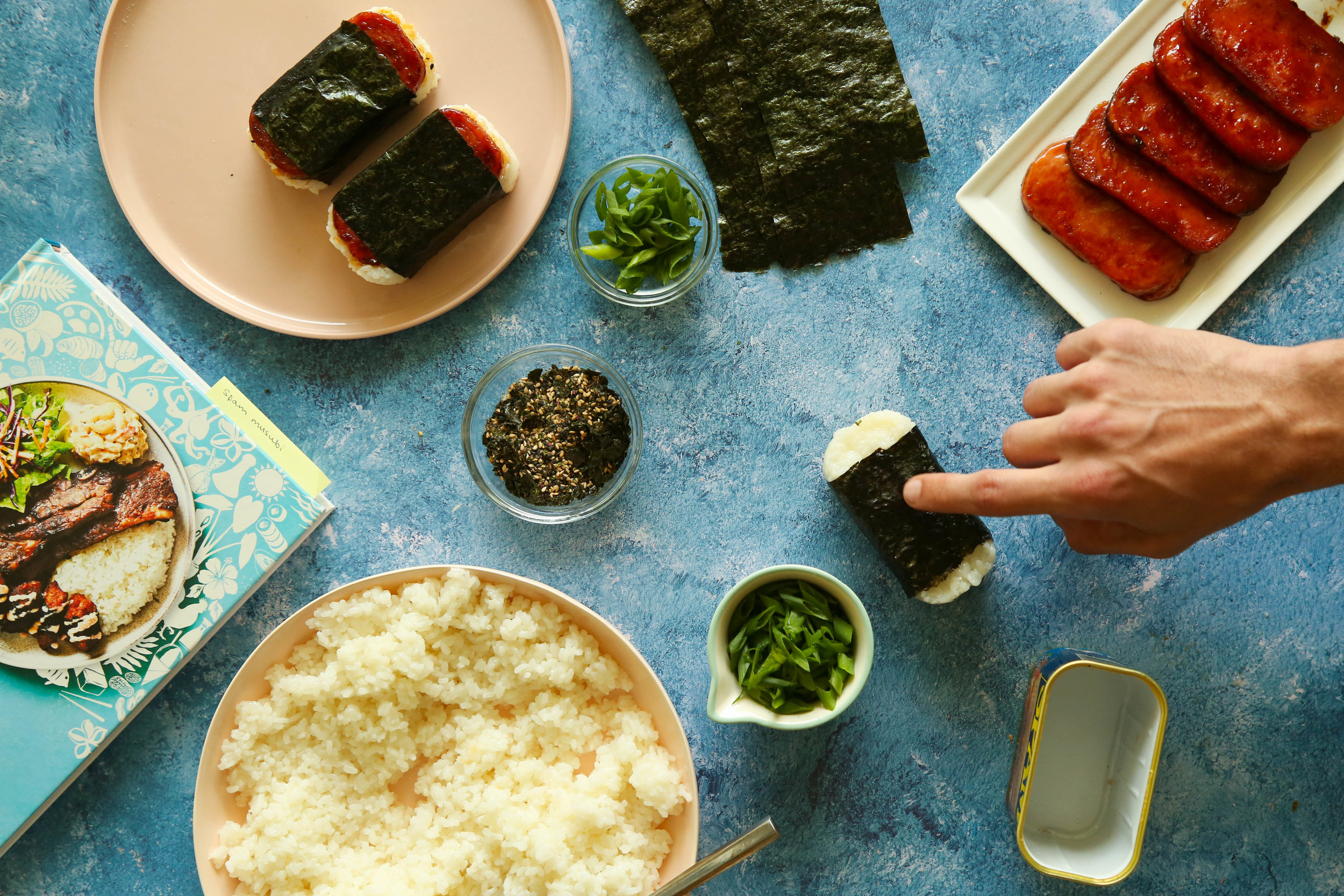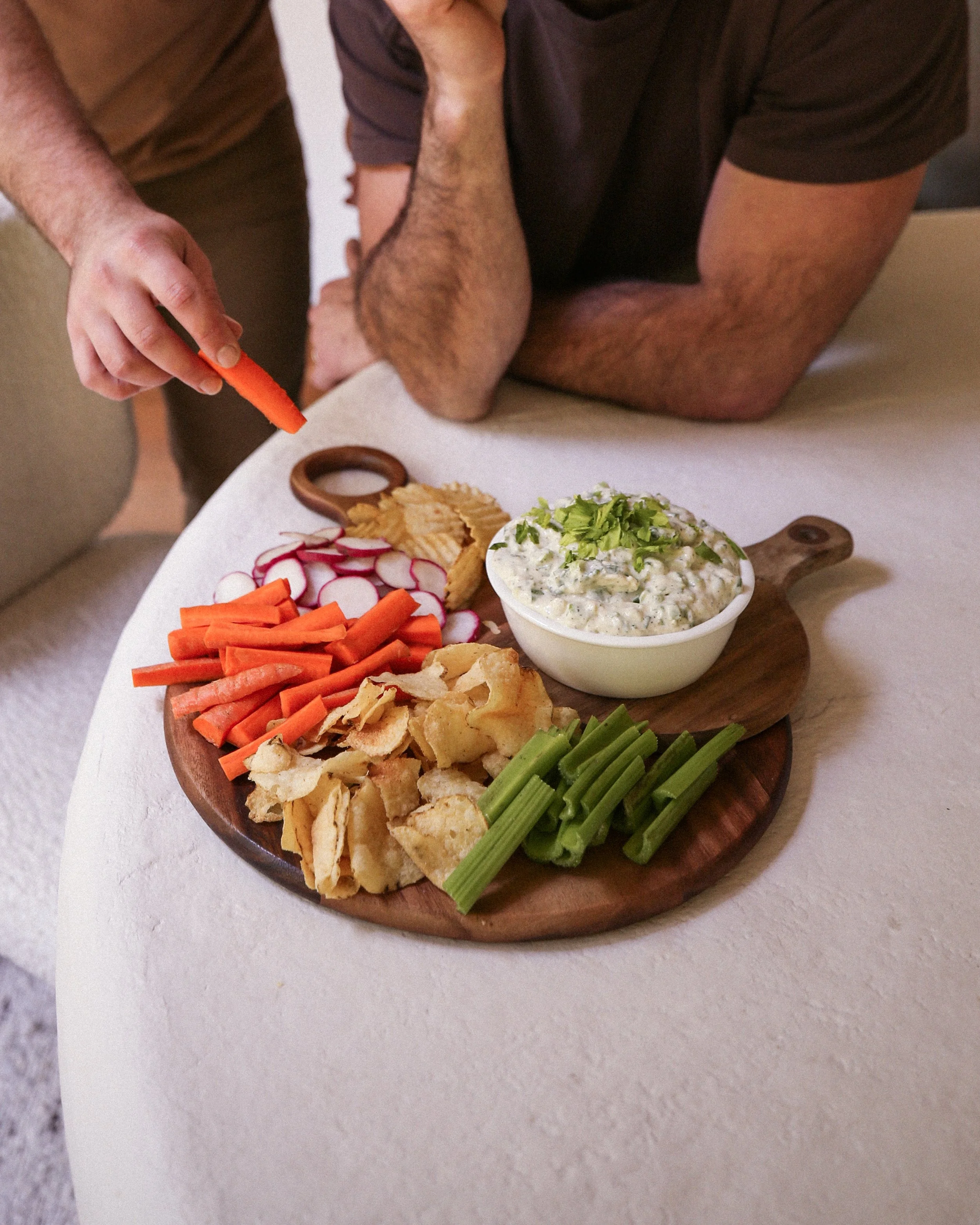Soy-Glazed Spam Musubi from Alana Kysar's Aloha Kitchen
Hello and a happy middle of the week to you and hope your life is good. By the time this post is published I’ll be at cruising altitude, probably on my second tequila & soda, so it’s safe to say my week is going great, not that you asked—we’re heading to Miami Beach for six whole nights! I’m pretty stoked to lie on the beach for several hours until I’m fully crispy and then regret none of it.
With that on deck, I guess we decided to channel that tropical energy into this week’s recipe and pull from a completely different tropical place thousands of miles away, Hawai’i. Our friend Alana Kysar’s new cookbook Aloha Kitchen is all about Hawai’ian cuisine, and we’ve been flipping through it and drooling for approximately our entire lives since it came in the mail, so it’s been sort of weirdly wet in our apartment but we’re trudging along. Did you know there’s literally like so many different huge influences on Hawai’ian food and history? Alana lays it all out super well and now I just want to know absolutely everything about the unique blend of Western, pan-Asian, Pacific, and native foodstuffs going on there.
One thing that Beau and I were both like “woah” about was the soy-glazed Spam musubi. It’s just. So. Cute. And I think this might be the only way Spam could look truly “cute” unless it were covered in puppies. Even that could be an issue. I can safely say this is the first time Spam has made an appearance on this blog—to be real, I don’t think I’ve ever even tried eating it before now? It feels like such a cultural touchstone that my heart is telling me “Yes, you must’ve” but my brain is saying, “Well, no, you just haven’t.” Whatever, now after trying this recipe I’m just wondering what the hell where u been all my life, Spam? Side note: before you go on @ us about how unhealthy Spam is…1.) thank you for caring about my health and 2.) okay, we’re not about to live off the stuff :) Besides, Spam is like a staple of Hawai’ian food for its convenience and a little bit for its nostalgia, so maybe let’s just check our prejudgements at the door mmk?
This recipe was really easy and fun, so that’s always a nice plus—and you don’t need fancy sushi making equipment to make it happen! If you don’t have a musubi mold you can pretty solidly replace it with the Spam can and some plastic wrap, and they’ll come out all cute and uniform just like ours did. Scroll down for the recipe and be sure to check out the new cookbook, Aloha Kitchen!
Soy-Glazed Spam Musubi
From Alana Kysar’s Aloha Kitchen
Makes 8 musubi
2 Tablespoons soy sauce
2 Tablespoons light brown sugar
1/2 teaspoon mirin
1 to 2 teaspoons neutral oil (we just used extra virgin olive oil)
One 12-ounce can Spam Less Sodium, cut horizontally into 8 slices (clean the can and set aside for use in this recipe if you don’t have a musubi mold!)
3 sheets roasted sushi nori, cut into thirds crosswise
2 teaspoons furikake
5-6 cups cooked short-grain rice (we used sushi rice)
Whisk together soy sauce, brown sugar, and mirin. Set aside.
Lightly coat the bottom of a large skillet with the oil and heat over medium heat until sizzling. Fry Spam slices until evenly browned and crispy, 2 to 3 minutes each side, bringing the heat to low for the last minute of cooking, then turn off the heat.
Pour soy mixture into skillet and turn Spam slices to evenly coat them. The mixture is going to cook down quickly, so don’t leave them unattended! Transfer immediately to a plate.
Place a strip of nori rough side up on a cutting board or clean work surface. Line the cleaned, empty Spam can with plastic wrap and press one slice of Spam all the way down to the bottom of the can.
Sprinkle 1/4 teaspoon furikake over the Spam slice. Take 1/2 cup (loosely packed) cooked sushi rice and pack it into the can as well, pressing with your fingers until the rice is evenly, firmly patted down and flat.
Pull the stack of rice and sliced Spam out of the can by pulling out the plastic wrap, then place the stack Spam-side down onto the strip of nori.
Bring both ends of nori up to meet in the middle of the rice. If needed, you can wet your finger and rub it along one end of the nori to help it stick to itself. Flip musubi over so the seam faces down, and go back to step 4 with all the remaining ingredients. Serve immediately or store wrapped in plastic wrap for later.
That’s all for now. Let us know if you try this out and how it goes!
XOXO Matt
Notes
Avoid sticky hands—by dipping your hands in a small bowl of water before creating each musubi.
Keep them uniform—by measuring out the rice with a measuring cup (as mentioned above, we used 1/2 cup per musubi).















